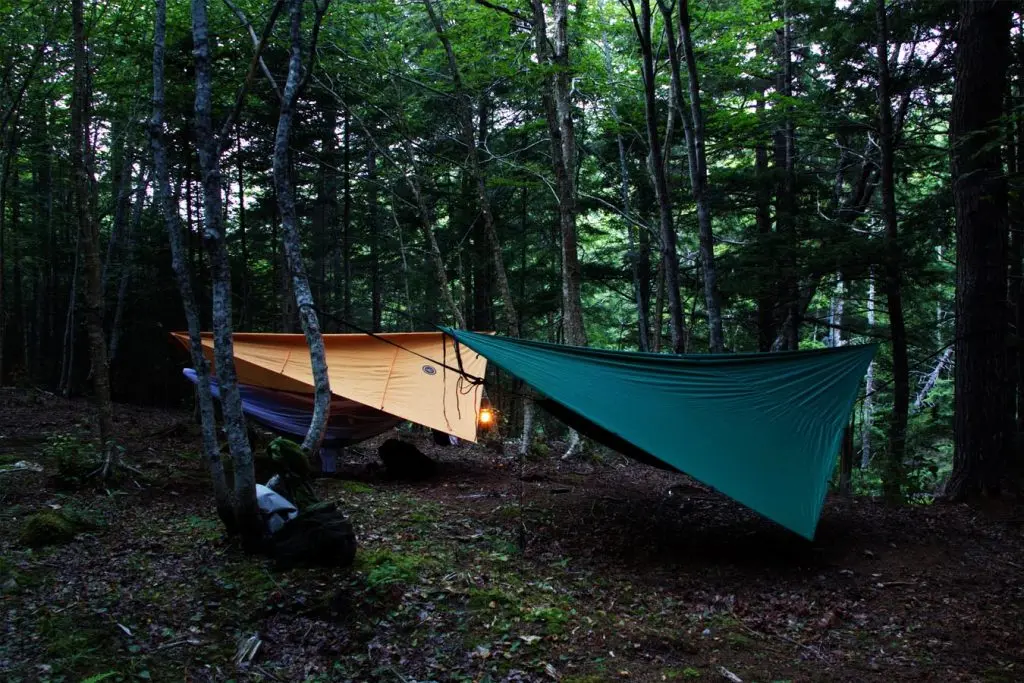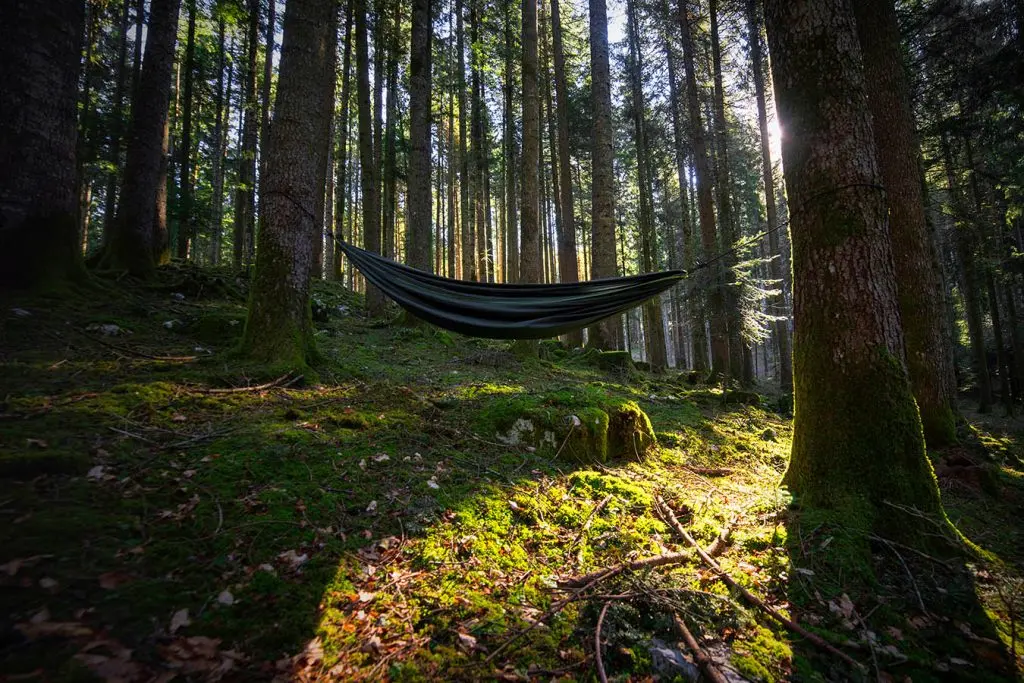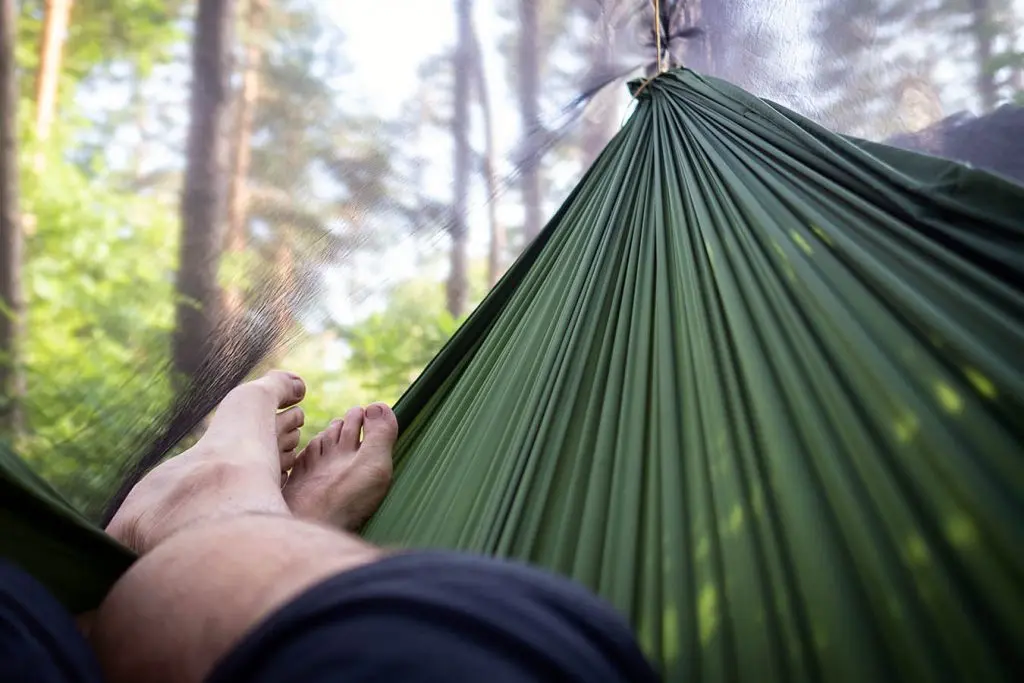Hammock camping season can seem fleeting as there are certainly seasons where it’s a dream and seasons where it can be rough. Spring and Fall hammock camping are about the best. Of course, these seasons also present some issues in terms of rainfall.
With a good tarp and some knowhow, you won’t have to cancel your trip. In fact, you could become a master of hammock camping in the rain.
Preparation
Anytime you are going to head out into the woods there are some important preparations that you should consider. Hammock camping in the rain is no different. Obviously the most important first step is to let someone know where you are going so that you can be found if an accident occurs.
Don’t do the egotistical thing and assume that you are invincible in the woods. Bad things happen to lifelong woodsman. Be sure someone knows where to find you.
Forecast
The next step you should take is understanding your weather forecast. Remember, don’t focus as much on the weather in your area. You need to know what is happening where you are headed.
We can travel as much as 4 hours west to camp out and thousands of feet up in elevation. The weather is a quite different thing up there.
Be sure you are not entering into a situation that is untenable. We can prepare you to hammock camp in the rain during a downpour but not a thunderstorm with wind gusts powerful enough to topple trees.
That is just dangerous, and you should be inside a sound structure if you are facing that kind of threat.
Topo
When you are hammock camping in the rain you also need to consider water levels where you are headed. You will likely sleep in your hammock as the rain falls overnight. The tap and pop of rain on the tarp over your hammock is as therapeutic as anything at a spa.
However, overnight rains might turn your normal camping location into a flooded area. Small mountain creeks, streams and lakes can flood quickly making certain paths impassable. After a peaceful night of rain, you could wakeup to a very different landscape than the one you left for your dreams.
Study a topographical map and plan to camp on high grounds. Find yourself a handful of camping locations so that you have a backup if you find one of your campsites already taken. Do not camp next to a river or stream.
Checking your gear
A quick gear check is important.
- Your hammock should be fully assessed along with your tarp, both will need to be in full working order as even the smallest hole will fill up your hammock with rivulets of water from the rain
- This will ruin the entire camping trip
- You also need to check straps to be sure that there is no wear and tear.
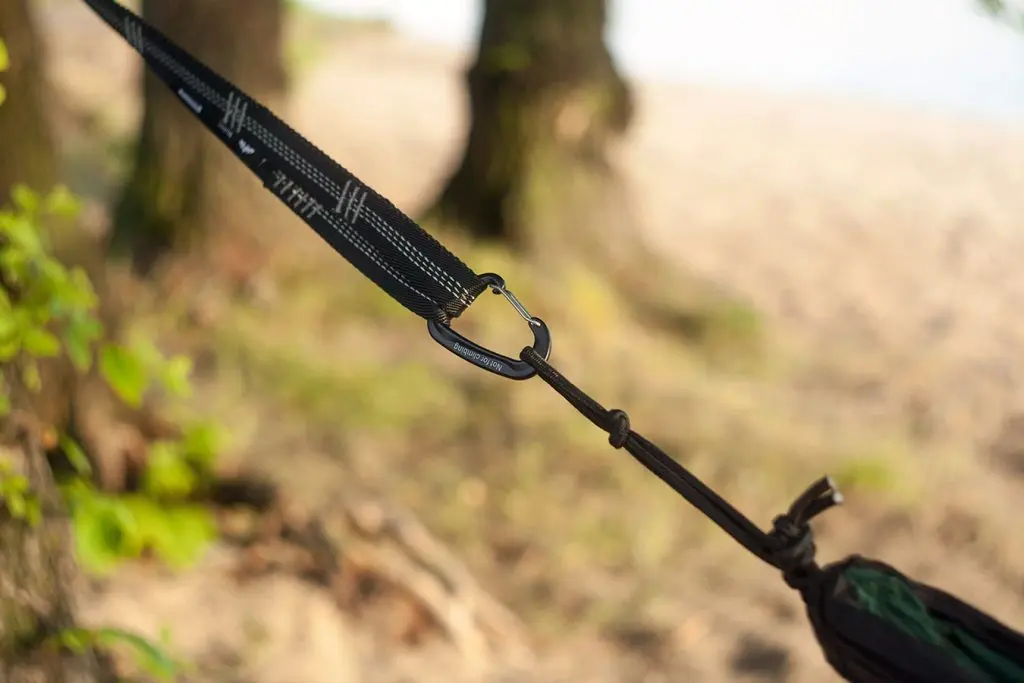
Equipment
Hammock camping in the rain will require all the camping gear that you carry on a typical trip. Whenever we are going on a new trip or a trip that features the added challenge of weather, we will bring a few extra things.
- Sewing Kits for Patching
- Extra Paracord
- Extra Bankline
- 2 Ponchos (1 to cover you and one to act as backup tarp
Simple camping hammock hquipment
- Hammock
- Straps
- Tarp
- Stakes
- Bankline or Paracord
Other camping essentials
- Jet Boil Stove
- Metal Cup
- Water Bottle
- Instant Coffee
- Camping Food
- Lantern
- A Good Book!
Pitching
Once you find a location to hang your hammock for the night, you will be able to start the pitching process. You are going to be pitching in the rain so that is a unique situation.
There are some things you need to consider before setting up, during the tarp setup and even after the hammock is set and ready.
Pre-Setup
Setting up for hammock camping in the rain is a little different because you are constantly struggling to stay dry and to have your setup remain dry, as well.
Camping in harsh weather or any weather sets up other things for you to consider during the pre-setup. You need to be incredibly careful about choosing the right pair of trees to tether your hammock to.
Rain can have a profound effect on the trees. Soaking rain and wind have the power to uproot massive oak trees. This is why camping in the high grounds is so important during the rain.
Another important area to check in your pre-setup is above your camp. You need to be careful about widow makers or loose branches that are hung up in other branches. These can fall on you while you sleep and injure or much worse, even kill you!
The other thing to look for during your tree inspection is the existence of dead branches that are still attached to the tree. After a rainstorm you often see a bunch of branches on the ground. These weak branches get soaked and the added weight might be enough to break those branches off.
Once you have found your safe location with two healthy trees, you can begin the process of setting up your tarp.
Hammock Setup
Set your hammock up first. It is much easier to set up a hammock when you aren’t dancing under a tarp.
Your hammock is also the guide for where your tarp should be setup. Now you might think that setting up a hammock in the rain is a bad idea. However, you can make this process quite simple by using your tarp to keep the hammock dry.
Start by wrapping the trees with your straps. Be sure that the strap closest to your feet is setup a little higher than the strap closest to your head. You want your straps to be set at about a 30-degree angle. This will help with the water collection
Open the tarp so that one side is getting hit by the rain. Pull out your hammock and drape the tarp over it. This will keep the hammock dry as you hang it. Don’t worry about getting it perfect here, you can adjust once the tarp is over you.
Keep the hammock covered until you set your ridgeline to hang the tarp. This method works great and gives you the ability to setup the hammock without anything in your way.
It also allows you to get maximum coverage from your tarp. If you set the tarp up first, you might not get the coverage or the angle that makes sense.
IMPORTANT STEP: Tie some paracord or bankline to ties on your hammock. Tie a simple clinch know and leave about 6 inches of cord hanging down. This is where the water will collect and fall rather than dripping down the rope that hangs your hammock. Without this step your hammock could start to fill up with water overnight.
In a surprise rain or a heavy downpour, you could certainly set your tarp up first. This would be to keep you dry and to assure your hammock stays as dry as possible.
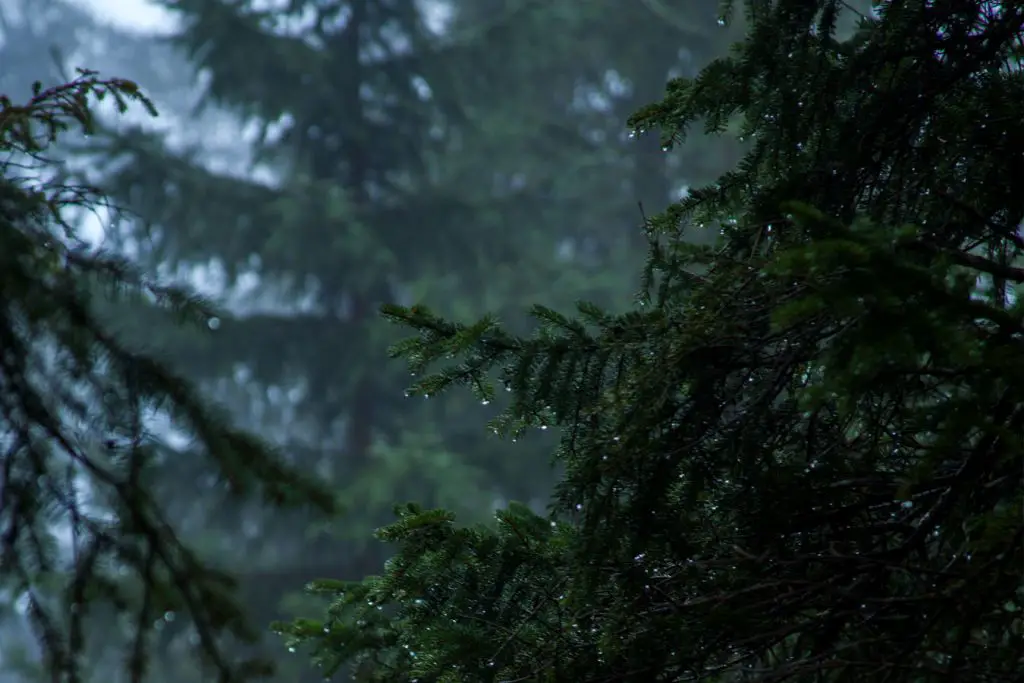
Tarp Setup
At least one side of your tarp must remain dry. This tarp will be your roof for the night and your total protection from the rain. Without a tarp your hammock is going to fill up with water and you are going to be miserable and tired for the duration of the trip.
Most importantly your tarp needs to be intact and you should have handled this on the inspection phase of trip planning. Now it is time to hang your ridgeline and to setup your tarp. If you have a successful tarp setup you are going to take care of at least 50% of your problems.
Your ridgeline is the cord between the two chosen trees that you will hang the tarp on. Hang the ridge line low. The closer your hammock is to the tarp the better.
You can use any type of knot you want to create this ridgeline, but it must be sturdy. We usually use an improved clinch knot for this because we have a fishing background and do it well. It is also not going to slip or come loose.
Your tarp should have a pair of loops that the ridgeline can run through. Use these as it will ad even more stability. Remember, this is your roof!
Once your ridgeline is set you are going to be able to throw the tarp over at the center so that you have equal parts of the tarp on either side. Depending on your tent you likely have three stake down points on each side of your hammock.
Use stakes or carve stakes from small pieces of wood to keep these down. Aluminum stakes are cheap and light. Really no reason not to carry them. They make this part much easier.
Now that your tarp is secured over the hammock
Staying Dry
One of the greatest challenges is to stay dry. Much of this comes from simple preparation. You are going to want to have all your gear protected while you are heading to the campsite in the rain. This means you should invest in a dry bag to cover your gear.
Having a quality waterproof outer shell is vital to dealing with the weather. This outer shell should be a thin rain jacket that is lightweight. We’re big fans of the stasher jackets that can be stored in your backpack. While these are not as impressive as some of the big brand outer shells the stasher is remarkably effective.
If you are looking for an even more affordable option to staying dry simply pack up an XL or XXL poncho that can slip down over you, your head, and your backpack. A nice big poncho will cover you and your backpack. A few of these will cost you under $10 and you will have plenty of coverage before during and after the storm.
Advantages
Hammock camping in the rain is one of the ways that you can enjoy the wilderness on an entirely new level. If you are fortunate to wakeup to a cool morning that has been showered overnight, you might feel like you are in an entirely new world.
The air is fresh and clean. The early morning sun lights up the linger drops in the leaves and it is really a magic way to wakeup and take in a cup of coffee.
Naturally, you will see very few campers, if any, on your adventure. The rain keeps many people home. If your trip involves some hiking the next day or another activity the rain will likely thin the crowds.
Sleeping in the rain is another tremendous benefit to hammock camping in the rain. If your tarp and hammock are setup properly, you will be slipping into serenity with the pitter patter of raindrops on your tarp to guide you. We particularly enjoy waking up and turning over only to be lulled back to sleep by the sound of rainfall.
Summary
The outdoors is a balancing tool that people like us use to round the edge of the sharp technological world. Hours hunched over computers or stuck inside, breathing recirculated air makes you yearn for that dirt time more than ever!
It is up to the outdoorsmen to figure out how to get the most time in the field. We can tell you that the quickest way to add more time in the wild is to learn how to conquer the seasons. If you can conquer winter and the wet season, you will get much more camping in each year.
Beating the cold in winter is much harder than the wet season.
Having the right gear and following the steps above you will be able to pitch a tent in the rain with success. Hammock camping in the rain is only intimidating the first time you try it. After that you will find that it is simply a collection of steps that leads to a relaxing nights sleep.
Be safe and cautious with where you setup and respect the storm. Outside of that don’t forget to enjoy yourself!
Related guides
Best Hammock Sleeping Pads For Summer And Winter
Best Hammock with a Bug and Mosquito Net
35 Hammock Tips For First-Time Campers


